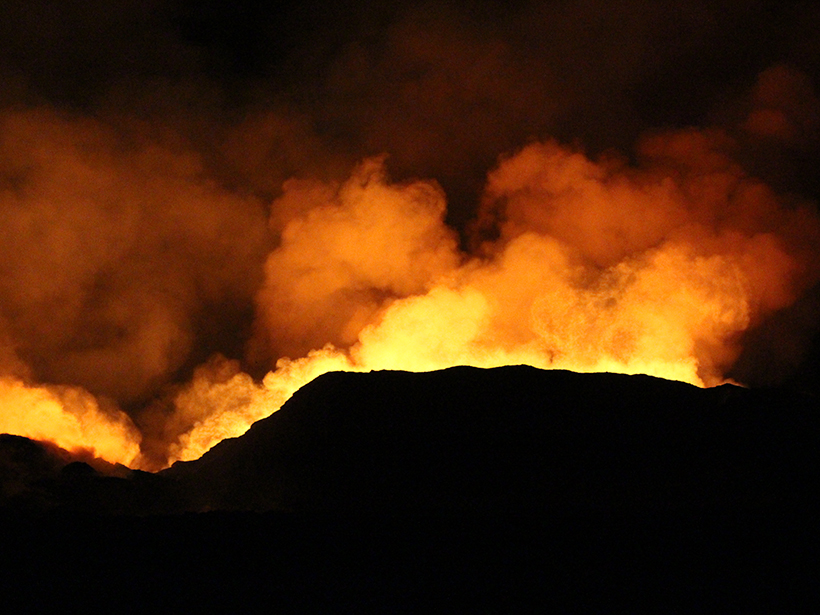Hundreds of volcanic explosions detected underwater at Kīlauea
The explosions, identified during the 2018 eruption phase, offer a clear acoustic signal that researchers could use to measure ocean properties.
Hawaii
Volcanic Tremor and Deformation at Kīlauea
Two new studies investigate activity at Hawaii’s Kīlauea leading up to and following the 2018 eruption to better understand the volcano’s plumbing and behavior.
Revealing Complexity of Groundwater Flow with Hydrogeophysics
A combination of passive seismic and electrical measurements are used to unravel the complex hydrogeology structure and associated groundwater flow paths at a coastal site in O’ahu, Hawai`i.
Podcast: What’s It Like Pretending to Live on Mars?
We spoke with science writer Kate Greene about her experiences on a 4-month-long Mars analog mission.
Deep Submarine Fresh Water: A New Resource for Volcanic Islands?
The discovery of large freshwater reservoirs off Hawaii suggests that other volcanic islands may have similar resources, which could help meet water demands amid population growth and climate change.
Insights from the Depths of Hawaii’s Kīlauea Volcano
One of the world’s best monitored and most active volcanos still has secrets to yield, and researchers are turning to vapor bubbles trapped in melt inclusions to find them.
A Tried-and-True Medium to Broaden the Reach of Science
Television programming reaches broad, diverse audiences, but scientists must help tell their own stories and speak to the communities in which they live.
From Lava to Water: A New Era at Kīlauea
At Kīlauea Volcano, scientists are using unoccupied aircraft to monitor the new water lake, a possible harbinger of explosive activity, that formed after the volcano’s 2018 eruption.
Fault Dips Figured in Kīlauea’s Caldera Collapse
Large-volume volcanic eruptions can create instabilities in the ground above magma chambers, leading to massive collapses and telltale calderas.
Looking Straight at the Sun
Thanks to some crucial calibrations, the world’s biggest solar telescope will have a clearer view of the Sun.










